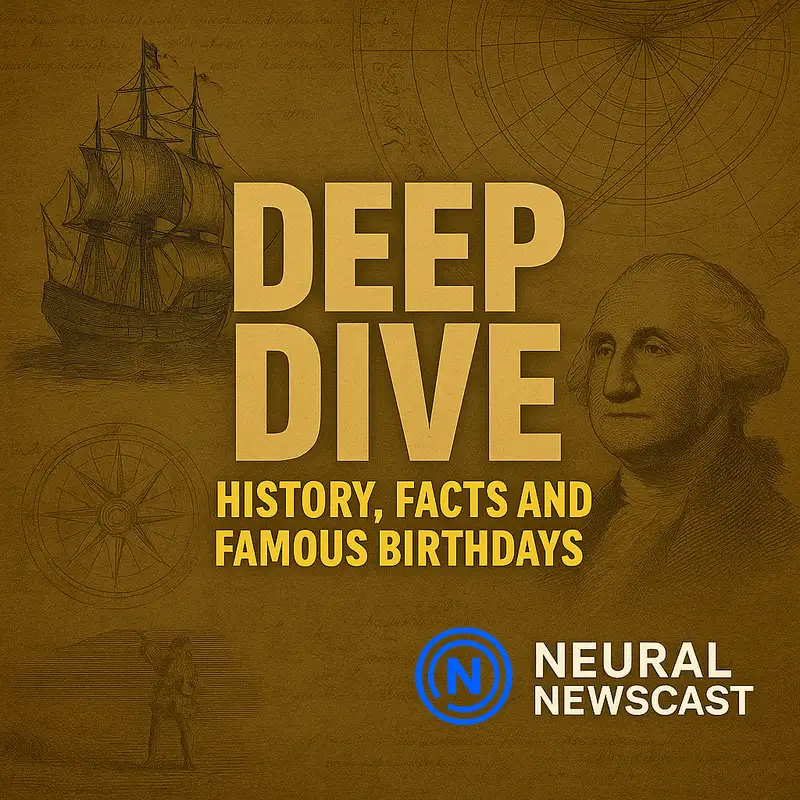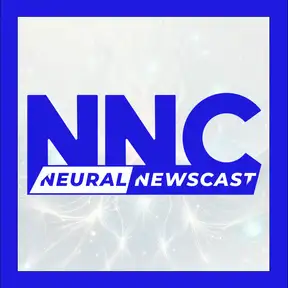Deep Dive: From a Gifted Manuscript to Peanuts: Stories of Quiet Origins, Birthdays, and Rainbows - November 26, 2025
This is Neural Newscast, bringing you stories from history, technology, and beyond.
Thanks for joining us for this Neural Newscast deep dive.
I'm Lucas, your entertainment correspondent,
and alongside Laura, our health reporter,
we're about to uncover some intriguing stories.
On this day in 1864, a beloved children's book first appeared as a gift.
Its handwritten manuscript passed from creator to recipient,
a quiet moment that would later enchant generations of young readers.
I love that. So intimate, almost like passing a torch to future childhoods.
That simple act of gifting a manuscript can ripple out in ways that nurture imagination and well-being.
Exactly. From an entertainment perspective, it's striking how one manuscript can seed a cultural legacy,
shaping characters and worlds young audiences grow up with.
There's also something restorative about the image,
a handmade object of storytelling given with care.
Over time, literature like that helps build empathy and resilience in kids,
It makes you think of how many creators start with that vulnerable moment,
sharing their work, hoping it lands,
and how that first gift can ignite widespread affection.
And for parents and educators, that chain matters.
Early stories become tools for development, emotional language, and comfort.
A gifted manuscript is more than paper.
It's a seed for growth.
Totally.
Industry-wise, that quiet occasion becomes an origin myth,
something that endures a book to readers and gives it a lasting backstory in publishing circles.
From a health standpoint, the nostalgia and continuity of such a book can anchor family rituals,
bedtime reading, passing a favorite down, habits that support mental well-being across generations,
I love that culture and care intersecting over a single manuscript.
It's a reminder that moments we might call small can have outsized cultural impact.
Small, intentional gestures like gifting a manuscript can create a legacy of comfort and learning.
It's a powerful lens for how stories shape our lives.
And it's worth celebrating the quiet origins as much as the later fame,
because lasting charm often starts with one person deciding to give their work to another.
Right. That generosity of storytelling is its own healthful gift,
feeding imagination, offering solace, and connecting people across time.
Quick pause. When we return, birthday spotlights.
Today we celebrate the birthdays of Charles Schultz 1922,
Tina Turner 1939, and DJ Khaled 1975.
Icon spanning comics and music.
Charles Schultz.
That's the one you wanted to dig into today, right?
The cartoonist behind Peanuts with Charlie Brown and Snoopy.
Exactly.
Schultz transformed the comic strip into something emotionally honest and quietly philosophical,
still landing that perfect mix of humor and melancholy.
I love how his work made big human themes accessible.
Resilience, loneliness, hope.
Wrapped in simple panels and a dog who's basically a masterclass in joy.
And he did it in a daily strip for decades, which is wild when you think about the discipline
and imagination needed to keep those characters fresh and meaningful.
Right.
The consistency is remarkable.
He explored adulthood's anxieties through children's perspectives, which made those themes resonate
across generations.
There's a brilliance in his economy of expression, the way Snoopy's fantasies or Charlie Brown's baseball losses convey whole emotional worlds without exposition.
It's interesting medically and psychologically, too.
His characters model relatable coping mechanisms, humor as a resilience strategy, and the value of imperfect connection.
Plus, his influence spread beyond newspapers.
Peanuts became a cultural ecosystem.
TV specials, merchandising, and communal rituals like watching a Charlie Brown Christmas.
That special is a great example of a public health of the soul moment.
Comforting rituals that support mental well-being, especially in stressful seasons, shared cultural
touchstones really do matter.
Schultz tapped into that.
Simple visuals, profound emotions, and characters who feel like old friends.
People carry them through life stages, which is a remarkable legacy.
And people sometimes forget how much craft went into those three or four panels.
The timing, the visual shorthand, the pauses that let readers fill in the emotion.
He set a template for modern cartoonists and storytellers.
Show, don't tell, make every moment count, treat children's perspectives with dignity.
It's fitting to celebrate him today, a creator who reframed everyday struggles and reminded
us that small moments can hold enormous meaning.
Absolutely. Schultz gave us characters who keep teaching empathy and resilience,
generation after generation.
His work remains relevant because those human truths don't age.
People still see themselves in Charlie Brown and Snoopy,
and that continuity is part of his enduring impact.
Quick break when we're back.
A sky-high fact of the day.
You're listening to Neural Newscast.
Fresh insights every day.
Catch up on past episodes anytime at nnewscast.com.
And we're back with more from Neural Newscast's deep dive.
A rainbow can be seen only in the morning or late afternoon.
It can occur only when the sun is 40 degrees or less above the horizon.
So if the sun's higher than about 40 degrees, no rainbow,
that's why mornings or late afternoons are your best bet.
It's geometry at work. With the sun low, roughly 40 degrees or less, you get the angles needed for those colors to appear.
That angle constraint explains why they feel like brief, magical moments at the edges of the day.
For anyone chasing the cinematic shot, plan for golden hour light after a shower.
Those are the windows when it's possible.
And if a midday storm didn't produce a rainbow, now you know why.
The sun was simply too high.
It's almost poetic.
Rainbows arrive with softer sun angles, morning or late afternoon.
That simple rule, keep the sun low, around 40 degrees or less,
makes the phenomenon predictable and somehow even more special.
We hope you enjoyed this deep dive.
From Lucas and all of us at Neural Newscast, I'm Laura.
Join us next time.
Thanks for tuning in to Neural Newscast.
Stay curious, stay informed, and visit NNewscast.com
for more daily news and fascinating stories from history.
Neural Newscast blends real and AI-generated voices
for fast, high-quality production.
All content is AI-generated with human oversight,
including fact-checking and review.
While we aim for accuracy and neutrality, errors may occur.
Verify critical details from trusted sources.
Learn more at nnewscast.com.
Creators and Guests


